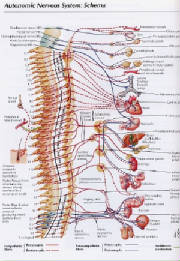|
These muscles include the ilio psoas, gluteus maximus, gluteus medius, biceps femoris, ischium tuberostiy, ilio tibial
band, quadratus lumborium, rectus abdominis, adductors, pectineus, and gracillis. In laymen's terms, we massage the stomach,
glutes, hamstrings, and groin areas. By doing extensive work on the stomach we are dealing not only with muscles but with
your digestive & eliminative system as well.
We can use different techniques to accomplish this, Deep Tissue, Sports Massage, Lomi Lomi, Shiatsu, or Hot Stone Massage.
Slow gentle soothing yet deep work with stretching can be done or very vigorous, strong deep work with the knees and feet
with stretching can be applied as well. We will tailor the session for your specific need.
We will test your body for different reflexes to determine where the origin of the problems is. There are different points
on the body that we will press that are painful in the begining and then after loosening those muscles the pain will lessen
when we press the second time. Some of these points correspond with Shiatsu accupunture points. Bodywork alone is not the
solution, we encourage you to get a colonic, do a detox through diet modification, infrared sauna, Scenar Therapy, ionic
foot bath to further help you heal.
Kegel Exercises for ED/Impotence
In 1948, gynecologist Dr. Arnold Kegel developed a series of exercises
involving what is now commonly referred to
as the "pelvic floor" to
help women develop physical control over the incontinence that is
often associated with childbirth.
Physicians generalized the prescription of these "Kegel exercises" to
help overcome urinary incontinence from any
cause, and eventually
urologists began to prescribe these exercises for men who experienced
incontinence after a prostatectomy.
A number of studies reported in the international literature in recent
years have suggested that pelvic floor exercises
are useful in the
treatment of a different problem: erectile dysfunction in men. In some
instances, Kegel exercises
were found to offer relief from ED
equivalent to that of Viagra and similar drugs.
Ralph and Barbara Alterowitz report in their book, "Intimacy with
Impotence" that a 2003 British study found rates
of improvement
similar to those "seen in a large trial of men taking Viagra." Dr.
Frank Somer, in a 2001 study published
in the International Journal of
Impotence Research, observed that pelvic floor exercises had an even
higher rate of
success than a PDE5 inhibitor (the class of drugs that
includes Viagra and Cialis).
Given that Kegel exercises are easy to do, don't cost anything, have
no side effects, and have been shown effective
in several studies, it
seems to me that they might be worth a try. There's nothing to lose by
trying, and they just
might work.
Here are the four steps of a set of Kegel exercises:
Tighten your urinary flow muscles as if you wanted to stop urination.
Hold those muscles tight as you count to 10.
Hold
this position while also tightening your anal muscles to another
count of 10.
Do a set of ten repetitions three times
a day.

|
| Nerves that feed into the colon also connect with other areas |
|